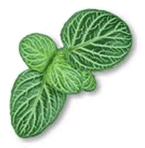
Kava
Introduction
This fact sheet provides basic information about the herb plant or part of a plant used for its flavor, scent, or potential therapeutic properties. Includes flowers, leaves, bark, fruit, seeds, stems, and roots. kava-common names, uses, potential side effects, and resources for more information. Kava is native to the islands of the South Pacific and is a member of the pepper family. Kava has been used as a ceremonial beverage in the South Pacific for centuries.Common Names
kava, kava kava, awa, kava pepperLatin Names
Piper methysticumWhat It Is Used For
- Kava has been used to help people fall asleep and fight fatigue, as well as to treat asthma and urinary tract infections.
- Topically, kava has been used as a numbing agent.
- Today, kava is used primarily for anxiety, insomnia, and menopausal symptoms.
How It Is Used
The root and rhizome (underground stem) of kava are used to prepare beverages, extracts, capsules, tablets, and topical solutions.What the Science Says
- Although scientific studies provide some evidence that kava may be beneficial for the management of anxiety, the U.S. Food and Drug Administration (FDA) has issued a warning that using kava supplements has been linked to a risk of severe liver damage.
- Kava is not a proven therapy for other uses.
- NCCAM-funded studies on kava were suspended after the FDA issued its warning.
Side Effects and Cautions
- Kava has been reported to cause liver damage, including hepatitis and liver failure (which can cause death).
- Kava has been associated with several cases of dystonia (abnormal muscle spasm or involuntary muscle movements). Kava may interact with several drugs, including drugs used for Parkinson's disease.
- Long-term and/or heavy use of kava may result in scaly, yellowed skin.
- Avoid driving and operating heavy machinery while taking kava because the herb has been reported to cause drowsiness.
- Tell your health care providers about any complementary and alternative practices you use. Give them a full picture of what you do to manage your health. This will help ensure coordinated and safe care.
Sources
- National Center for Complementary and Alternative Medicine. Kava Linked to Liver Damage. National Center for Complementary and Alternative Medicine Web site. Accessed at http://nccam.nih.gov/news/alerts/kava/ on July 10, 2007.
- Kava. Natural Medicines Comprehensive Database Web site. Accessed on July 5, 2007.
- Kava (Piper methysticum G. Forst). Natural Standard Database Web site. Accessed on July 3, 2007.
- Kava kava rhizome (root). In: Blumenthal M, Goldberg A, Brinckman J, eds. Herbal Medicine: Expanded Commission E Monographs. Newton, MA: Lippincott Williams & Wilkins; 2000:221-225.
- Kava (Piper methysticum). In: Coates P, Blackman M, Cragg G, et al., eds. Encyclopedia of Dietary Supplements. New York, NY: Marcel Dekker; 2005:373-380.
- U.S. Food and Drug Administration. Kava-Containing Dietary Supplements May Be Associated With Severe Liver Injury. U.S. Food and Drug Administration Web site. Accessed on July 10, 2007.
- NCCAM National Institutes of Health






